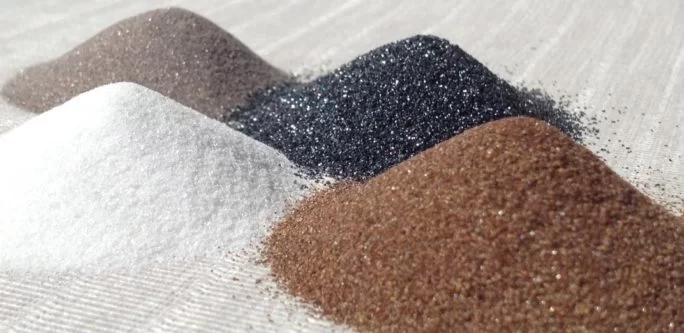Unlocking the Power of Sandblasting Abrasives
Introduction:
Sandblasting abrasives have emerged as indispensable tools across various industries, offering unparalleled efficiency and precision in surface preparation and restoration tasks. From automotive refinishing to industrial maintenance, the versatility of these abrasives continues to redefine the standards of quality and performance. In this comprehensive guide, we delve deep into the world of sandblasting abrasives, uncovering their types, applications, and the crucial role they play in achieving optimal results.
Types of Sandblasting Abrasives:
Sandblasting abrasives come in a diverse range of materials, each tailored to specific applications and surface requirements. Common varieties include garnet, aluminum oxide, silicon carbide, and glass beads. Garnet abrasives, renowned for their hardness and low dust generation, excel in removing rust and corrosion from metal surfaces. Aluminum oxide abrasives, with their superior cutting power, are ideal for heavy-duty applications like metal fabrication and shipbuilding. Silicon carbide abrasives, prized for their hardness and sharpness, are favored in applications demanding aggressive material removal, such as etching and deburring. Glass beads, characterized by their spherical shape and recyclability, find widespread use in delicate surface finishing tasks like aerospace component cleaning.
Applications of Sandblasting Abrasives:
The versatility of sandblasting abrasives extends across numerous industries, encompassing a wide array of applications. In the automotive sector, these abrasives play a pivotal role in preparing vehicle surfaces for painting by eliminating old coatings, rust, and contaminants. Similarly, in the marine industry, sandblasting abrasives facilitate the restoration of ship hulls and decks, ensuring optimal performance and durability in harsh maritime environments. Moreover, in the construction sector, these abrasives are indispensable for surface preparation tasks such as concrete cleaning and graffiti removal, enabling the seamless execution of renovation and maintenance projects. Additionally, sandblasting abrasives find application in the aerospace, manufacturing, and petrochemical industries, where precision and efficiency are paramount for achieving desired surface finishes and material properties.
Choosing the Right Abrasive:
Selecting the appropriate sandblasting abrasive is crucial to achieving optimal results in surface preparation and restoration tasks. Several factors must be considered when choosing the right abrasive, including the substrate material, desired surface finish, environmental regulations, and equipment compatibility. For instance, when working with delicate substrates such as fiberglass or wood, softer abrasives like glass beads or plastic media are preferred to avoid surface damage. Conversely, when dealing with tough materials like steel or concrete, harder abrasives such as aluminum oxide or silicon carbide are chosen for their superior cutting power and efficiency. Additionally, factors such as abrasive size, shape, and density must be taken into account to ensure compatibility with the blasting equipment and achieve consistent results.
Safety Considerations:
While Sandblasting Abrasive suppliers offer unparalleled efficiency in surface preparation, it is imperative to prioritize safety to mitigate potential hazards associated with their use. Respiratory protection is paramount, as the process generates airborne dust particles that can pose respiratory health risks if inhaled. Therefore, operators must wear appropriate respirators with high-efficiency particulate filters to prevent inhalation of abrasive dust. Additionally, personal protective equipment (PPE) such as goggles, gloves, and coveralls should be worn to shield against abrasive rebound and exposure to harsh chemicals. Furthermore, proper ventilation and dust extraction systems must be in place to minimize airborne dust levels and maintain a safe working environment for operators and bystanders alike.
Conclusion:
In conclusion, Surface treatment abrasives represent a cornerstone of surface preparation and restoration across diverse industries, offering unmatched efficiency, precision, and versatility. By understanding the different types of abrasives available, their applications, and the factors influencing their selection, professionals can harness the full potential of these abrasive materials to achieve superior results in surface treatment tasks. However, it is imperative to prioritize safety measures to mitigate potential hazards associated with abrasive blasting operations and ensure a safe working environment for all personnel involved. With the right knowledge, equipment, and safety protocols in place, sandblasting abrasives can elevate the standards of surface quality and performance, driving excellence across various industrial sectors.

